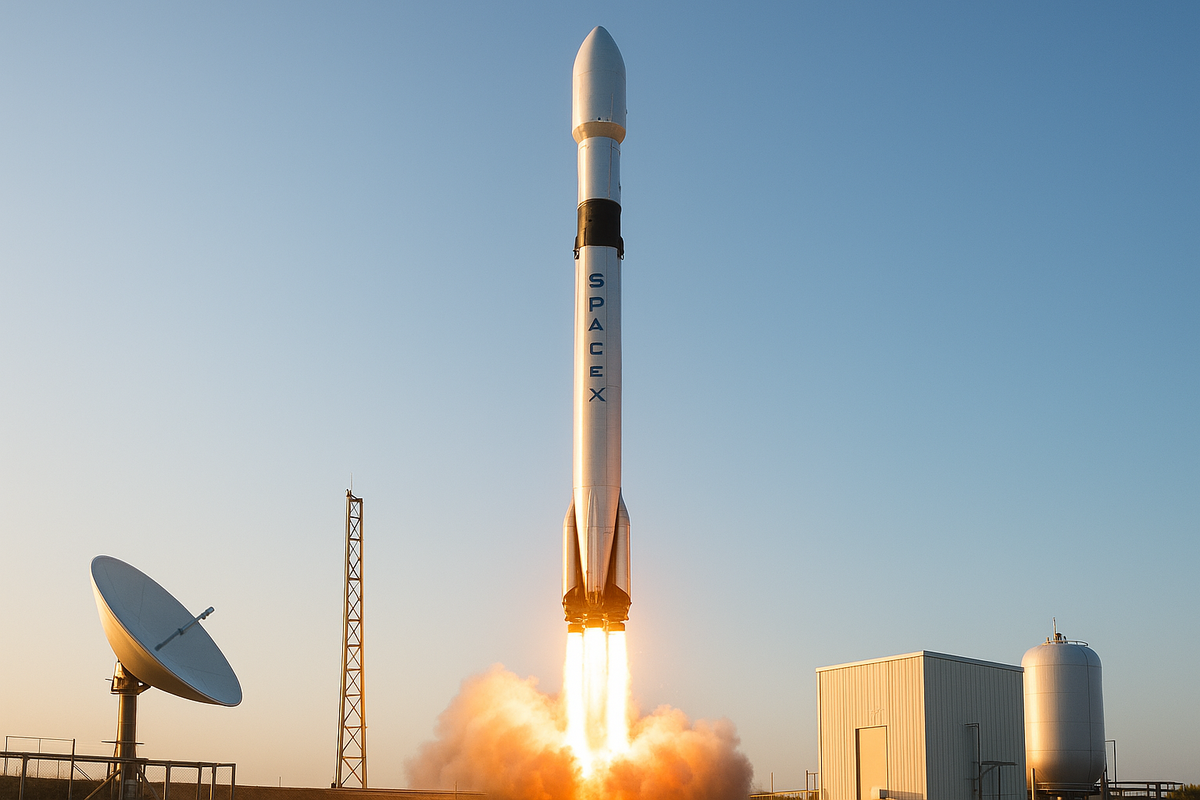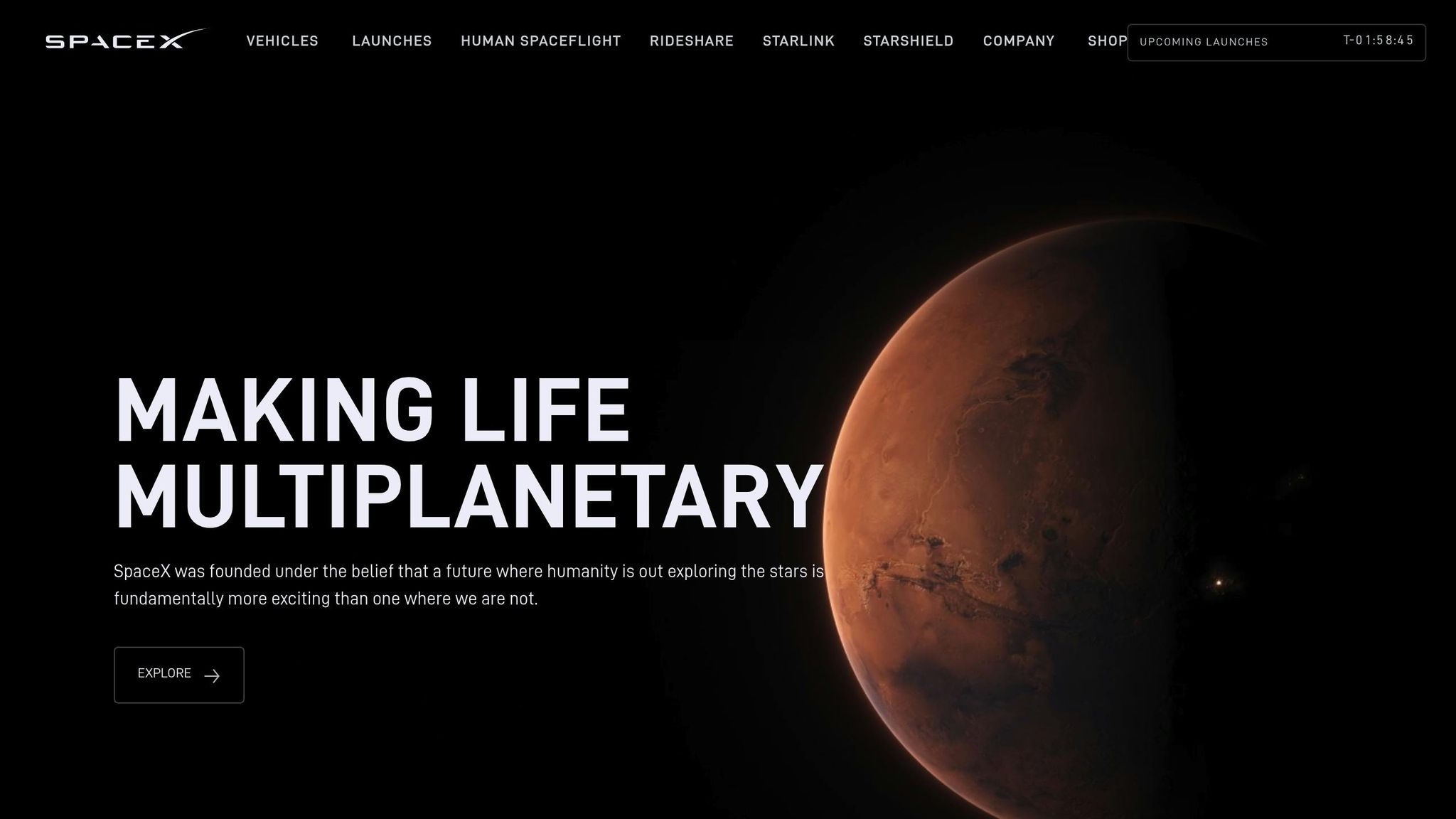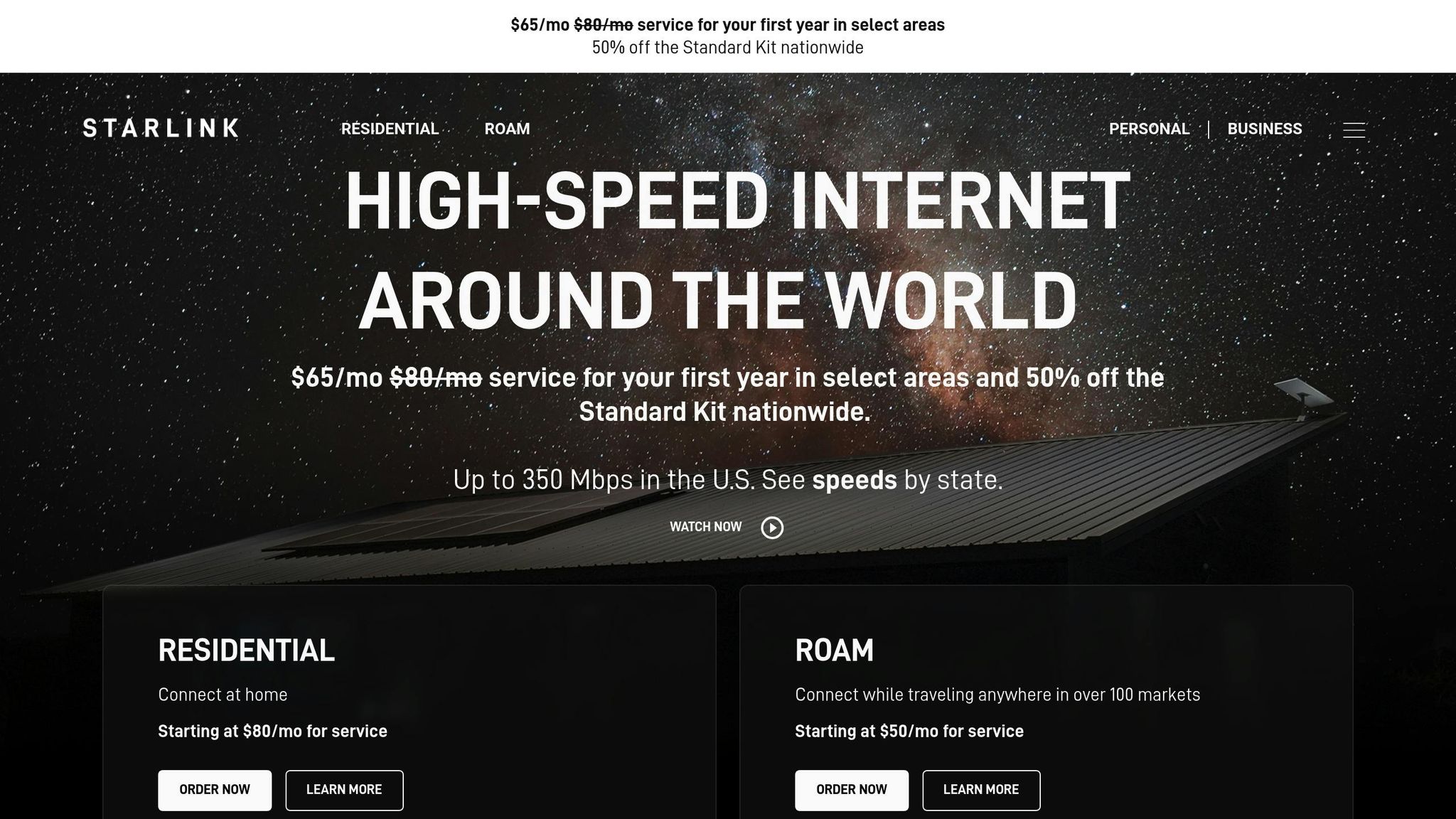Private Equity Insights: SpaceX's Cost Advantage
Explore how a leading aerospace company has revolutionized space access through cost efficiency and innovation, creating new investment opportunities.

SpaceX has reshaped the economics of space access, cutting costs dramatically while maintaining reliability. This shift has opened new opportunities for private equity investors. Key takeaways:
- Cost Efficiency: SpaceX's Falcon 9 launches cost about $15 million internally per flight, while competitors charge $100–$200 million.
- Reusability: Rockets like the Falcon 9 and Starship are designed for multiple uses, reducing expenses significantly.
- Market Leadership: SpaceX offers launch costs as low as $857/kg, compared to $8,185–$11,126/kg from others.
- Revenue Streams: Starlink, with 6,000+ satellites and 2M subscribers (as of May 2025), generates steady income to fund future projects.
- Government Savings: SpaceX has saved the U.S. government $40 billion through cost-effective contracts.
SpaceX's focus on vertical integration, reusable technology, and engineering efficiency positions it as a leader in the space industry. Its cost advantage not only boosts profitability but also expands market opportunities, making it a strong candidate for private equity investment.
How SpaceX Humiliates NASA's Budget

SpaceX's Cost Structure and Technology
SpaceX has carved out a competitive position in the aerospace industry by transforming how rockets are built and operated. By focusing on reusability, in-house production, and engineering efficiency, the company has managed to significantly lower costs while maintaining high performance.
Reusable Falcon 9 and Starship Rockets
Unlike traditional rockets that are discarded after a single use, SpaceX's Falcon 9 rocket is designed to be reused, slashing costs by recovering and refurbishing its first stage. The company has mastered techniques for landing these stages, whether on drone ships or land-based platforms, ensuring efficient recovery.
Building on this concept, SpaceX's Starship system takes reusability a step further. Both the Super Heavy booster and the Starship upper stage are designed to be fully reusable. This ambitious goal aims to make space travel as routine and cost-effective as air travel, a key factor in SpaceX's financial projections and long-term growth strategy.
In-House Manufacturing and Supply Chain Control
SpaceX achieves much of its cost efficiency through vertical integration. Instead of depending heavily on external suppliers, the company manufactures many of its critical components in-house. These include rocket engines, avionics, flight computers, and heat shields. By keeping production under its roof, SpaceX gains tighter quality control, reduces costs, and speeds up production timelines.
The company's main manufacturing facility in Hawthorne, California, plays a central role in this process. Here, engineers and production teams work closely together, enabling rapid prototyping and iterative improvements. SpaceX also benefits from strategic partnerships and long-term agreements with raw material suppliers, which proved particularly advantageous during global supply chain disruptions.
Engineering Advances That Cut Costs
SpaceX's engineering philosophy focuses on simplification and standardization to keep costs low. By standardizing components across its systems, the company reduces manufacturing complexity and inventory expenses.
The Raptor engine, powered by methane and liquid oxygen, exemplifies this efficiency. Its full-flow staged combustion cycle boosts performance while aligning with SpaceX's long-term mission objectives. Additive manufacturing, such as 3D printing, further enhances efficiency by enabling the production of complex engine parts that would be difficult or expensive to create using conventional methods. This approach reduces the number of parts needed and speeds up development.
Rapid prototyping is another cornerstone of SpaceX's strategy, allowing the company to identify and fix issues early, avoiding costly failures later. Additionally, the company standardizes its flight software across multiple platforms, such as the Dragon spacecraft and Falcon 9 rockets, streamlining development and cutting costs across its programs.
SpaceX vs. Competitors: Cost Analysis
SpaceX has redefined cost efficiency in the aerospace industry with its focus on reusable rockets and streamlined operations. This approach has not only reduced launch costs but also put significant pressure on traditional aerospace companies to adapt to a more competitive marketplace.
Major Space Industry Competitors
In the U.S., United Launch Alliance (ULA) - a joint venture between Boeing and Lockheed Martin - has long been a prominent player. However, ULA primarily uses expendable launch systems, which generally result in higher costs per mission. In contrast, SpaceX's reusable rockets have dramatically reduced expenses, setting a new standard in the industry.
Blue Origin, Jeff Bezos's space venture, is also working on reusable suborbital and orbital rockets. Despite its ambitions, Blue Origin has yet to match SpaceX's operational pace and frequency of launches.
In the satellite communication sector, Amazon's Project Kuiper is preparing to deploy a massive satellite network aimed at global connectivity. However, unlike SpaceX, which uses its own rockets, Project Kuiper relies on external launch providers, adding complexity to its operations.
Similarly, OneWeb, another satellite operator, has faced financial hurdles in its journey to establish a large-scale satellite network. Its challenges illustrate both the risks and potential rewards of investing in satellite communications.
On the international stage, Arianespace has been a longstanding provider for government and commercial clients, offering its Ariane rocket series. While the company is working to introduce more cost-competitive options, many of its systems still rely on expendable rockets, which limits its ability to compete with SpaceX on price.
These examples reflect a broader industry trend: the push toward reducing costs and improving efficiency.
Launch Cost Comparison Data
SpaceX's emphasis on reusing rocket components gives it a significant edge over competitors relying on expendable systems. Reusability not only reduces the cost per launch but also lowers the price per kilogram of payload, making SpaceX a leader in cost-effective space transportation.
SpaceX's Market Share and Growth Capacity
SpaceX's ability to maintain a high launch cadence and its vertically integrated business model are key to its market dominance. By controlling various aspects of its operations, the company minimizes fixed costs and ensures a steady flow of missions.
Additionally, revenue from its satellite internet services, such as Starlink, feeds directly into further rocket development. This self-sustaining strategy, combined with a diverse client portfolio that includes both government and commercial entities worldwide, positions SpaceX to remain at the forefront of the industry. Its consistent contract wins and innovative approach continue to solidify its leadership and drive growth in the space sector.
How Cost Advantage Affects SpaceX's Valuation
SpaceX's valuation is heavily influenced by its ability to operate efficiently while maintaining advanced technological capabilities. These cost efficiencies drive strong revenue growth and solid profit margins, giving SpaceX a competitive edge that traditional aerospace companies struggle to replicate. By offering lower-cost launch services without compromising quality, SpaceX has carved out a formidable position in the market.
Revenue Growth and Profit Margins
SpaceX's cost structure is a major driver of its growth and profitability. Competitive pricing not only helps the company capture a larger market share but also supports healthy profit margins. A key factor here is SpaceX's vertically integrated manufacturing process, which reduces reliance on third-party suppliers, speeds up innovation, and spreads fixed costs across multiple missions.
While the initial investment in rocket development was substantial, the long-term benefits of reusability have been transformative. Rockets, once considered disposable, are now durable assets thanks to SpaceX's advancements in reusability, which significantly lowers operational costs over time.
Starlink's Self-Funding Model

Starlink takes SpaceX's cost efficiencies to another level by creating a steady, self-sustaining revenue stream. This satellite internet service generates recurring monthly income from a growing subscriber base, offering predictable cash flow that supports SpaceX's broader goals, including rocket development and space exploration.
What makes Starlink especially profitable is SpaceX's ability to deploy satellites at a fraction of the cost compared to competitors. This synergy between cost-effective satellite launches and recurring revenue strengthens Starlink's financial performance. With subscribers ranging from residential and business users to government clients, Starlink's diverse customer base ensures substantial and consistent income.
Beyond covering operational expenses, Starlink's revenue is reinvested in SpaceX's ambitious projects, such as next-generation spacecraft and exploration missions. This unique model merges commercial internet services with cutting-edge space technology, creating a financial backbone that supports the company's long-term vision.
SpaceX Valuation Forecasts Through 2030
SpaceX's innovative cost structure has played a key role in its impressive market valuation. Recent funding rounds highlight investor confidence in the company's ability to use its cost leadership as a powerful strategic advantage.
Looking ahead, analysts predict continued growth fueled by Starlink's expanding subscriber base and the eventual commercial success of SpaceX's advanced launch vehicles. These forecasts are grounded in expectations of sustained demand for satellite internet and technological progress in spaceflight.
SpaceX's diversified revenue streams - spanning launch services, satellite subscriptions, and government contracts - add another layer of financial stability. This diversity reduces business risks and makes SpaceX an attractive investment for private equity firms seeking high-growth opportunities in aerospace.
For those interested in exploring these trends further, resources like the SpaceX Stock Investment Guide provide detailed insights into valuation trends, funding activity, and investment strategies. Understanding how SpaceX leverages its cost advantages to build financial and operational strength is essential for making informed investment decisions.
Private Equity Investment Strategies for SpaceX
SpaceX's industry-leading cost efficiencies create a unique landscape for private equity investors exploring pre-IPO opportunities in the aerospace sector. By understanding how these cost advantages translate into market dominance, investors can strategically position themselves to tap into the company's competitive strengths.
Leveraging Cost Advantages in Investment Analysis
SpaceX's cost structure is a critical factor for private equity investors. The company offers launch services at far lower prices than traditional providers, thanks to its reusable rocket technology. These systems drastically cut marginal costs after the initial development phase, enabling SpaceX to maintain strong profit margins while offering competitive pricing.
This cost leadership not only solidifies SpaceX's market share but also opens doors to new markets like small satellite constellations, space manufacturing, and commercial space stations - markets that become viable as launch costs decrease. Additionally, SpaceX's in-house production capabilities reduce expenses and bolster innovation, making its operations more efficient and its supply chain more resilient. These factors make the company particularly appealing for private equity investments, emphasizing the need for thorough due diligence.
Key Considerations for Investment and Due Diligence
Investing in SpaceX through private equity requires navigating a range of aerospace-specific challenges, from regulatory hurdles to technical complexities. These investments often demand significant capital commitments and a deep understanding of the industry.
Technical and Intellectual Property Assessment:
Beyond financial metrics, due diligence should include a detailed evaluation of SpaceX's technical capabilities and innovation pipeline. Analyzing the company's patent portfolio - covering areas like propulsion, manufacturing, and satellite technology - can provide insights into its competitive edge and potential licensing opportunities.
Regulatory Compliance:
Compliance with ITAR (International Traffic in Arms Regulations) is a critical factor. These regulations not only limit competition but also influence exit strategies. Investors must ensure regulatory eligibility and assess how these rules could impact future opportunities.
Financial Health and Cash Flow Analysis:
Rather than focusing solely on profitability, investors should examine SpaceX's cash flow sustainability. The company's heavy reinvestment in research and development often results in modest profits but strong cash generation. Evaluating free cash flow after R&D expenses offers a clearer picture of its ability to self-fund growth and maintain its technological leadership.
Contract Backlog and Revenue Visibility:
SpaceX's contract backlog - spanning government and commercial engagements - provides a measure of revenue stability. However, investors should assess the diversity of these contracts and consider risks like delays or cancellations that could impact cash flow and growth projections.
Educational Resources for SpaceX Investors
Investing in the space sector requires specialized knowledge due to the technical and regulatory complexities involved. For those interested in SpaceX, the SpaceX Stock Investment Guide serves as a valuable resource. This platform offers in-depth analysis of valuation trends, funding dynamics, and tailored strategies for pre-IPO investments. Its free Investor Club provides regular updates and insights, keeping investors informed in this fast-evolving industry.
Valuation and Metrics:
Traditional metrics like price-to-earnings ratios may not fully capture the value of SpaceX's technological innovations and market position. Instead, investors might consider metrics such as enterprise value-to-revenue multiples, cost-per-launch comparisons, or models that account for addressable market expansion.
Networking and Industry Insights:
Access to pre-IPO shares often depends on private networks. Educational platforms that connect investors with aerospace professionals can help identify promising opportunities. Staying informed about evolving commercial space regulations and export control requirements is equally important. Additionally, understanding technical concepts like specific impulse, payload capacity, and orbital mechanics can enhance due diligence and facilitate more productive discussions during the investment process.
Key Takeaways for Private Equity Investors
SpaceX's groundbreaking cost efficiency is reshaping the aerospace industry, offering private equity investors a compelling case for market expansion and potential valuation growth. With its ability to launch payloads at significantly lower costs than traditional methods, SpaceX has established a competitive edge that is difficult for others to replicate. These advantages provide clear opportunities for private equity strategies.
SpaceX's Market Leadership Position
SpaceX has revolutionized space access economics by adopting a cost leadership approach. Its reusable rocket technology and vertically integrated business model create high entry barriers, leaving legacy aerospace companies struggling to compete. These innovations not only reduce costs but also enhance operational efficiency, giving SpaceX a commanding lead in the market.
The company's reusable technology and integrated operations allow it to capture market share while diversifying revenue streams. For example, Starlink - a satellite internet initiative - demonstrates SpaceX's ability to leverage its cost advantages for strategic flexibility and consistent growth.
Lower launch costs are also paving the way for ventures that were once deemed financially unfeasible. Opportunities like small satellite constellations, space manufacturing, and commercial space stations are now within reach, broadening SpaceX's revenue potential and redefining what is possible in the commercial space sector.
Action Items for Private Equity Success
Private equity investors looking to capitalize on aerospace opportunities, including SpaceX, should focus on these key strategies:
- Thorough Due Diligence: Evaluate technical aspects such as patent portfolios, production capabilities, and compliance with regulations like ITAR (International Traffic in Arms Regulations). These factors are critical for assessing risks, especially when considering exit strategies.
- Cash Flow Analysis: Instead of relying solely on traditional profitability metrics, prioritize an in-depth review of cash flow generation. SpaceX's heavy R&D investments may obscure its underlying cash performance, so analyzing free cash flow after development costs and reviewing contract backlogs can provide a clearer picture of revenue stability. Additionally, diversification across government and commercial clients can help reduce concentration risk.
- Stay Informed: The private aerospace sector evolves rapidly. Resources like the SpaceX Stock Investment Guide offer insights into valuation trends and pre-IPO strategies. Their free Investor Club provides updates on funding rounds and market developments, keeping investors informed about emerging opportunities.
- Build a Strong Network: Accessing pre-IPO opportunities often requires connections. Engaging with aerospace professionals, attending industry events, and joining investor communities focused on space ventures can improve deal flow and enhance due diligence efforts.
Understanding that SpaceX's cost efficiency is not just about cheaper launches but a fundamental shift in market dynamics is crucial. Investors who grasp how cost leadership fuels market growth and enables new revenue possibilities will be better equipped to identify and capitalize on similar opportunities in the expanding commercial space economy.
FAQs
How does SpaceX's vertical integration drive its cost efficiency in the aerospace sector?
SpaceX's approach to vertical integration has been a game-changer in cutting costs. By keeping nearly every aspect of production under its own roof, the company sidesteps middlemen, minimizes reliance on outside suppliers, and maintains stricter control over quality and scheduling.
This in-house manufacturing strategy, combined with streamlined processes, allows SpaceX to achieve quicker production cycles and improve the reusability of its rockets. The result? Dramatically lower launch costs. These efficiencies not only keep SpaceX ahead of the competition but also push the boundaries of what's possible in aerospace, reshaping the industry's standards for affordability and progress.
How does SpaceX's Starlink project contribute to funding its future space missions?
Starlink plays a major role in funding SpaceX's ambitious ventures, including its plans for Mars colonization and expanding satellite networks across the galaxy. In 2024 alone, Starlink is expected to generate around $7.7 billion, making up roughly 58% of SpaceX's predicted total revenue of $14.2 billion.
This reliable revenue stream bolsters SpaceX’s financial stability, allowing the company to push the boundaries of space exploration and invest in cutting-edge projects.
How has SpaceX's reusable rocket technology transformed private equity opportunities in aerospace?
SpaceX's reusable rocket technology has transformed the aerospace industry by slashing launch costs. This breakthrough has not only made space exploration and satellite deployment more budget-friendly but also unlocked new markets, creating fresh opportunities for private equity investors.
For investors, SpaceX's ability to cut costs without compromising performance boosts its appeal and market valuation. This efficiency has shifted the way investments are approached in the aerospace sector, sparking heightened interest in SpaceX and the growing private space market.
Comments ()